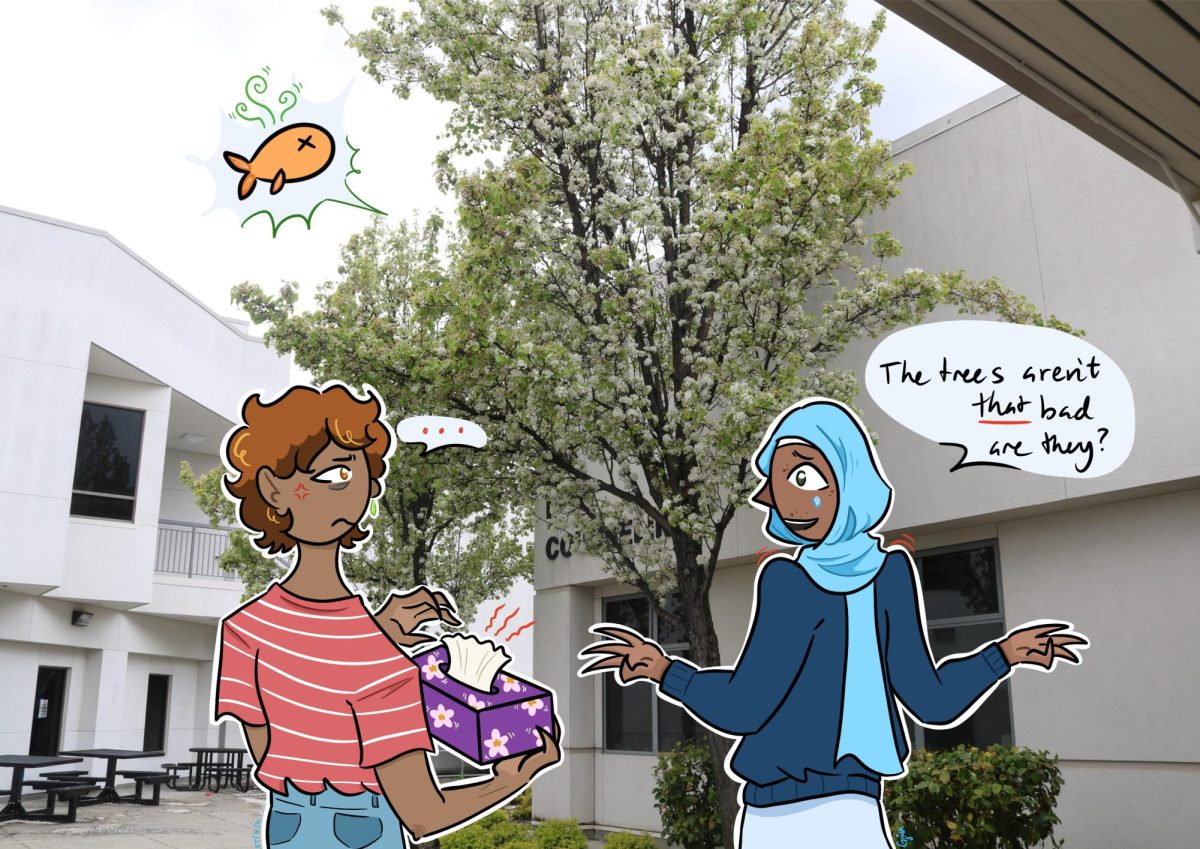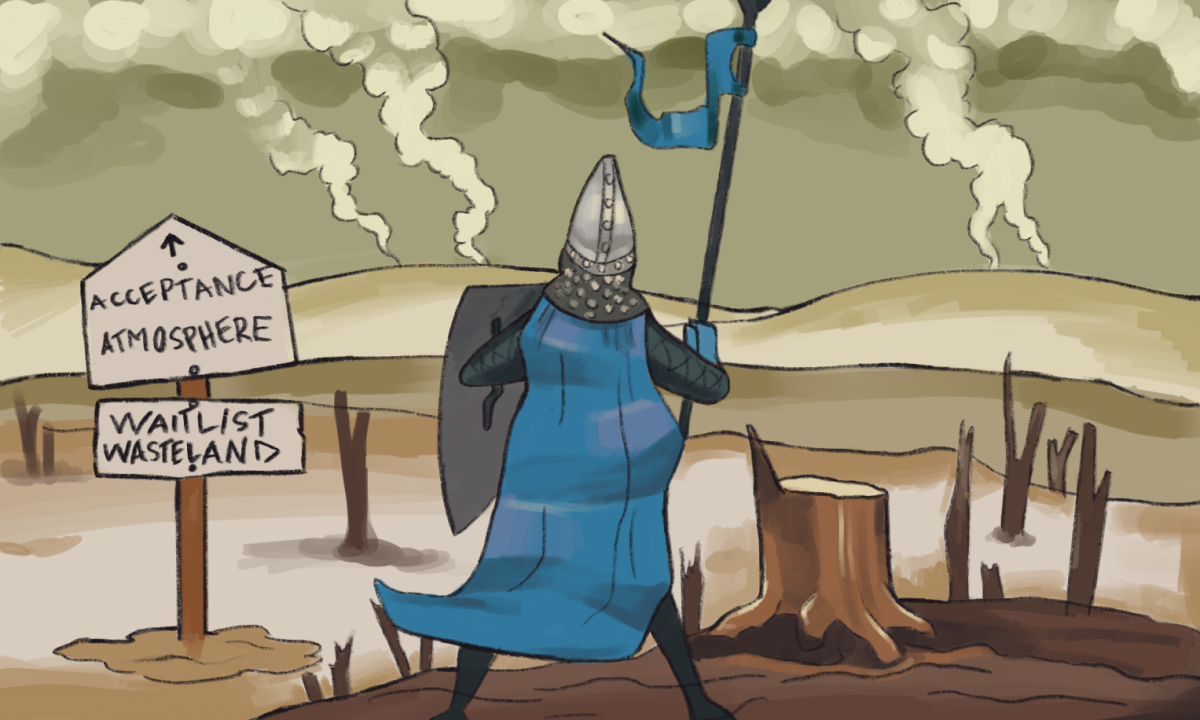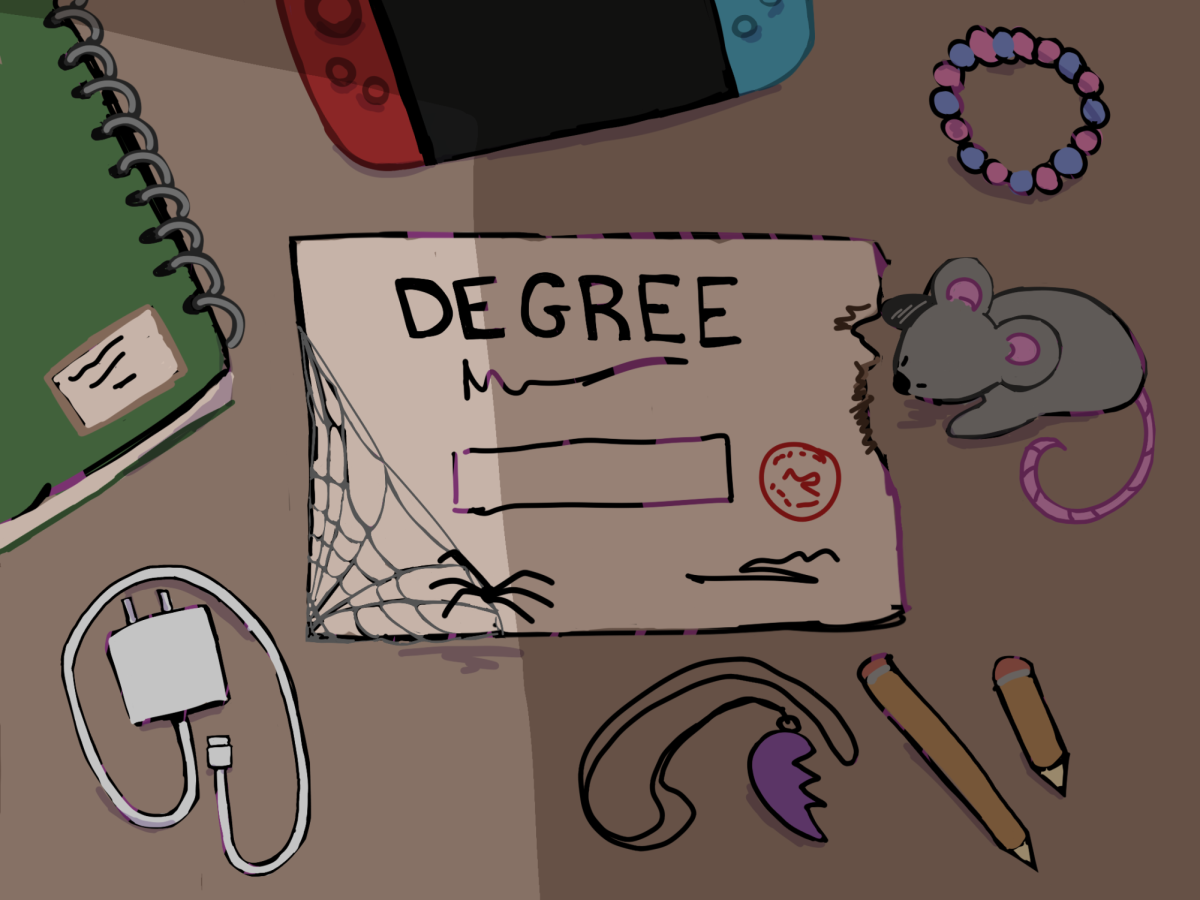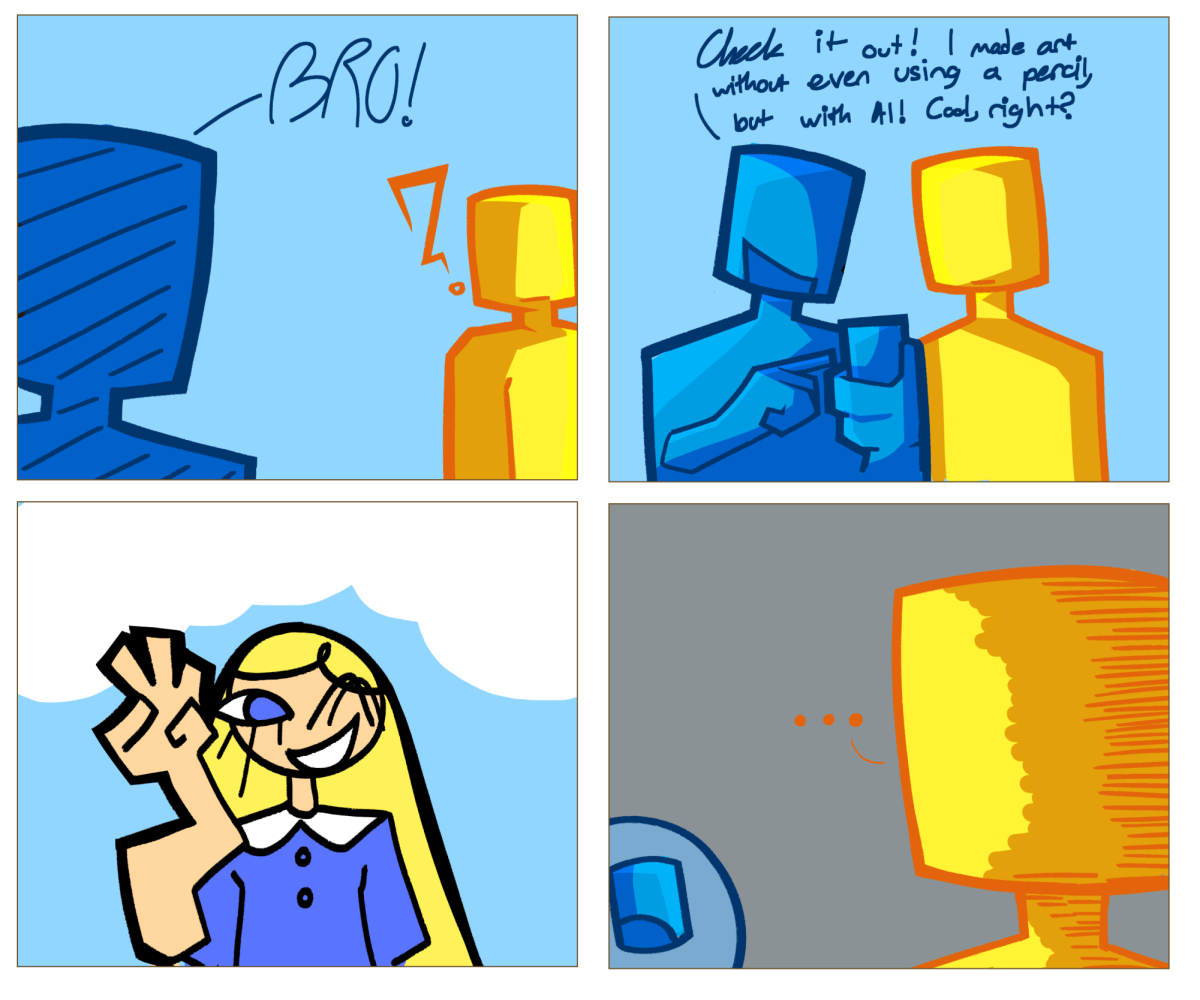Many Cal High students say that the white trees around campus are stinky and usually smell like fish.
This is true, which is why the foul smelling trees should be removed from campus.
These trees are Bradford pear trees. In other seasons of the year, the tall trees have green leaves with little to no scent. But in the spring, they bloom beautiful white petals that fall everywhere and have an odor that smells like rotting fish or spoiled food.
There are several disadvantages of Bradford pear trees around campus.
First and foremost, they smell. The stinky odor is from the white flower petals that bloom in the spring. Unfortunately, the unpleasant scent lingers until the white petals fall off in autumn.
Many Cal students complain each spring about the horrible smell the trees emit.
When the Bradford pear tree petals fall, they also create an incredible mess on campus. The pedals fall on students’ heads, in their food and even their open drinks. The trees also produce a significant amount of pollen which can trigger allergies. This causes students to dislike the tree more and more.
If these two issues are not enough, the trees have pest problems. They attract pests such as spider mites. The tiny pests can cause leaf discoloration on the leaves in autumn and start to damage the tree during hot and dry summer months.
They also attract scale insects which are pests that can weaken the tree by sucking the sap which may lead to mold growth.
These trees can also get a disease called the Canker disease. This causes various fungal bacteria and damage to different parts of the tree, which could ultimately kill the tree.
Bradford pear trees are also invasive trees, meaning they spread rapidly and outcompete native plants. This can lead to a reduction of certain areas of plants and where they grow.
Essentially, Bradford pear trees are bad for the environment because they disrupt the local ecosystems. Their rapid growth and ability to thrive in many ways allow them to spread so fast, leading to a reduction in the ecosystem.
This invasive tree steals native plants’ resources, such as sunlight, water and nutrients, possibly causing an imbalance in the ecosystem.
Lastly, Bradoford pear trees provide less habitat and food for wildlife. They don’t support insects or birds that have proper nutrients that they get from native trees.
As a result, birds and other wildlife that rely on their nutrient essentials struggle as these trees continue to invade the ecosystem.
So it’s pretty clear that the Bradford pear trees, known as the trees that smell, should be removed from the campus.
The white flower trees need to go
Sofie Woo, Staff Writer
May 1, 2025
Students resist throwing up their lunch after smelling the stinky Bradford pear trees.
Story continues below advertisement
More to Discover
About the Contributor

Sofie Woo, Staff Writer
Sofie is a freshman and it’s her first year being in newspapers and she’s excited to be a part of the elective. She wants to better herself in different writing skills and she wants to meet new connections as well. She has recently joined the Cal High Varsity Song Team (which is a competitive dance team) . She’s nervous but mostly excited since she is 1 out of 2 freshmans on the team. Sofie enjoys hanging out with her friends, baking, dancing, shopping and overall having fun. She loves dancing and has been dancing for 8.5 years and has been dancing competitively for 5 years. She just left her studio so she can succeed in her academics and her dance team. Her favorite foods are chips, ice cream, sushi, nuggets and fries, celsius, boba, and pizza. She has two brothers and two sisters and she is the youngest. One of her brothers goes to CHS and is a junior. Sofie can’t wait to begin her upcoming high school years at CHS.








